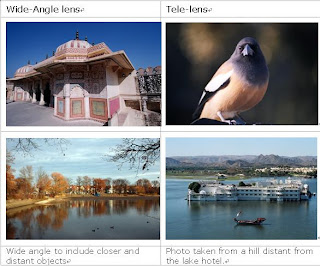Travel Photography 3
Shutter Speed
Shutter is a small plastic sheet that opens and closes to allow light onto the film/sensor or prevent light from reaching the film/sensor. Shutter speed controls the amount of time that your film/sensor, is exposed to light. It is measured in fractions or units of seconds. The lighter the environment, the shorter the time the shutter is needed to open for the light to reach the film or sensor, e.g. 1/250, 1/1000. When it gloomy, a slower shutter speed is required to maximise the time for the light to reach the film/sensor, e.g. 1/30, 1 second.
Focal Length / Lens
The focal length of a lens determines how much the subject will be magnified or distant. Lens are categorised as standard, wide-angle and tele. Standard lens is 50mm. It does not magnify or distant a subject. Wide-angle lens allows to take lots of things into the framing of a photo. It stretches the perspective and make the object closer to the len look bigger. Wide angel lens start from 10 and cand can be up to 28mm. Focal length higher than 28mm and below 50mm does not accommodate lots of things into the framing.
Tele lens draws distant objects closer to show details. The range starts 70/80mm. It can be up to 800mm. The higher the mm, the closer the objects is drawn for clear details.
Lens can be fixed or zoom which the focal length can vary within a range. For example, a wide angle lens ranged 10-24mm, a tele lens ranged 80-200mm. The more zoom a focal length becomes, the smaller the aperture is resulted. Say, a lens ranged 10-24mm. Its aperture value is f3.5-4.5. When 10mm is selected, the maximum aperture is 3.5. When it is zoomed to 24mm, the maximum aperture will be 4.5. The higher the aperture value, the smaller the amount of light can enter into the camera. Zoom lens with fixed aperture (i.e. whatever the focal length is the maximum aperture measure remains the same) is much more expensive than those with varied aperture.
With technology advancement, you can leave the shutter speed, aperture to digital cameras. However, you should practise more on leveraging the light, compose photos with optimal perspectives, utilise the metering and focal length to create stunning photos.
Shutter is a small plastic sheet that opens and closes to allow light onto the film/sensor or prevent light from reaching the film/sensor. Shutter speed controls the amount of time that your film/sensor, is exposed to light. It is measured in fractions or units of seconds. The lighter the environment, the shorter the time the shutter is needed to open for the light to reach the film or sensor, e.g. 1/250, 1/1000. When it gloomy, a slower shutter speed is required to maximise the time for the light to reach the film/sensor, e.g. 1/30, 1 second.
Focal Length / Lens
The focal length of a lens determines how much the subject will be magnified or distant. Lens are categorised as standard, wide-angle and tele. Standard lens is 50mm. It does not magnify or distant a subject. Wide-angle lens allows to take lots of things into the framing of a photo. It stretches the perspective and make the object closer to the len look bigger. Wide angel lens start from 10 and cand can be up to 28mm. Focal length higher than 28mm and below 50mm does not accommodate lots of things into the framing.
Tele lens draws distant objects closer to show details. The range starts 70/80mm. It can be up to 800mm. The higher the mm, the closer the objects is drawn for clear details.
Lens can be fixed or zoom which the focal length can vary within a range. For example, a wide angle lens ranged 10-24mm, a tele lens ranged 80-200mm. The more zoom a focal length becomes, the smaller the aperture is resulted. Say, a lens ranged 10-24mm. Its aperture value is f3.5-4.5. When 10mm is selected, the maximum aperture is 3.5. When it is zoomed to 24mm, the maximum aperture will be 4.5. The higher the aperture value, the smaller the amount of light can enter into the camera. Zoom lens with fixed aperture (i.e. whatever the focal length is the maximum aperture measure remains the same) is much more expensive than those with varied aperture.
With technology advancement, you can leave the shutter speed, aperture to digital cameras. However, you should practise more on leveraging the light, compose photos with optimal perspectives, utilise the metering and focal length to create stunning photos.




Comments